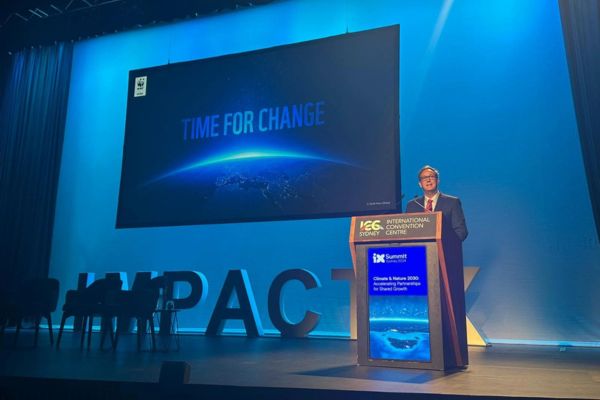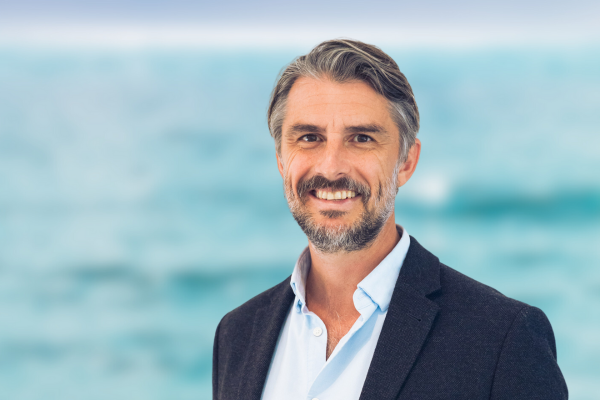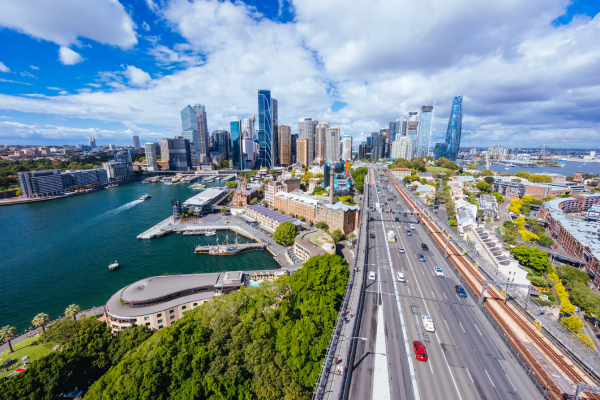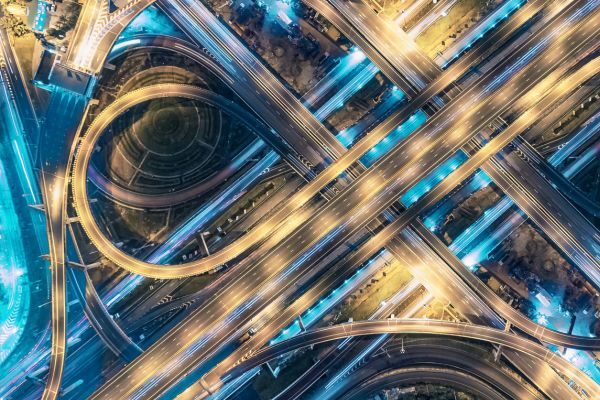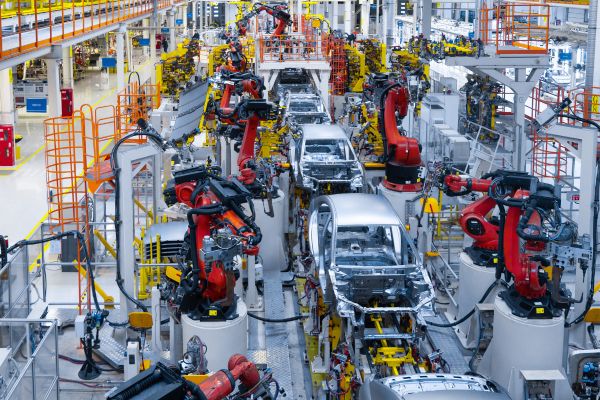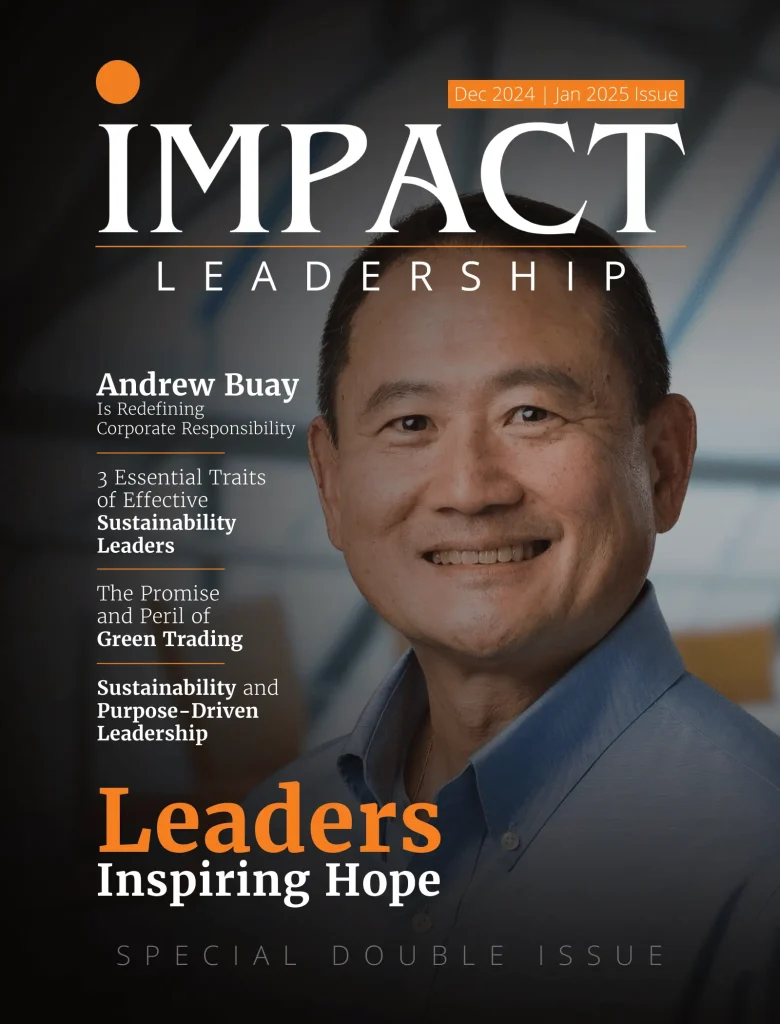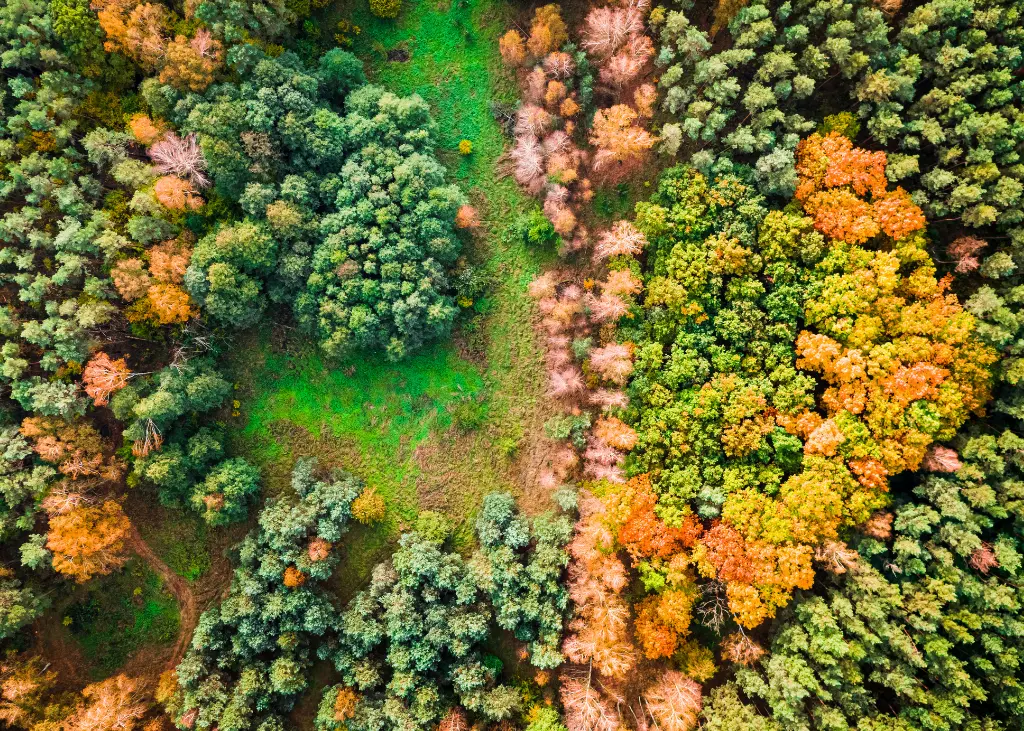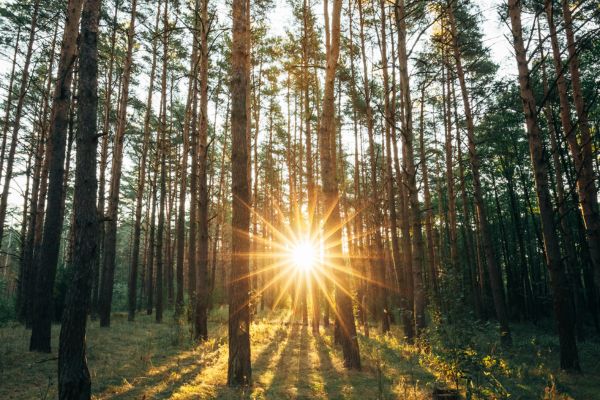In his thought-provoking address at the Impact X Summit Sydney 2024, Dermot O’Gorman, CEO of WWF-Australia, calls for a “regenerative revolution” to replace the outdated industrial model and tackle the interconnected crises of climate change, biodiversity loss, and inequality. Highlighting innovations in renewable energy, plastic recycling, and indigenous-led solutions, he emphasizes the urgency for action at speed and scale. His speech offers a bold vision for a future where humanity and nature thrive together. The full transcript of his speech follows:
Dermot O’Gorman
It is a time of change, but it is equally a time for change. Nature is calling us to step up on a global scale, and together, we’re here in this room to share a hope of how we can do things differently. Our world, our planet, the thing that we all depend on, needs, I believe, a regenerative revolution.
The last three industrial revolutions, starting in the 1770s, have all been industrial, delivering mechanization, electric-powered mass production, and IT-enabled automated production. However, over that 250 years, it has delivered a potent mix of different ideas and technologies that have caused massive shifts both in capital and in geopolitical power.
However, a fourth industrial revolution, which we are, I believe, going through today, cannot deliver for both people and nature. The current extractive model that we have is not designed for one planet. We have already exceeded the thresholds of six of the nine planetary boundaries. The cost of not transitioning for humanity is unbelievably inequitable, in fact, for all 8 billion people. Unlike previous generations, we have more information and more connectivity than ever before.
We must transform the economy from a linear industrial machine that continually consumes resources for growth to one that is circular, regenerative, and purpose-driven. We need to evolve beyond the dated thinking of an industrial revolution. This is what I like to call the first regenerative revolution. The current narrative of our time, and we will hear quite a bit over the next couple of days, is one of crisis: climate, nature, pandemics, regional conflict, inequity. Each generation has its crisis, especially during periods of technological disruption. But we tend to think that each era is different and are often ignorant of some of the lessons that we can learn from the past.
“We must go beyond doing less harm to doing much more about delivering a regenerative society. For me, this is real freedom for us as individuals, communities, and humanity.”
So I’d like to give you a short example from the 1920s and 30s. Up until the early 1900s, city streets were for horse-drawn carts, pedestrians, and children to play. However, the transition from horse and carts to automobiles was so fast that by the late 1920s and early 30s, most U.S. and European streets were primarily the thoroughfare of cars. There were no crossings, no regulations to protect pedestrians. There was a massive public backlash against the many, many deaths resulting on roads. Author Peter Norton describes in his book “Fighting Traffic,” which is an interesting read, that street users struggled to define and redefine what roads are used for. Pedestrians and parents campaigned for justice, calling motorists “road hogs” and “death cars.” However, it was the automotive interest groups who won the claim to the streets by evoking freedom. In that process, they created the concept of jaywalking, which was to blame and shame pedestrians.
100 years on, around 1 million people a year are killed by cars on roads around the world. So there are some lessons around the frames of justice versus freedom that are worth learning for this transition. Over the next couple of days, we’re going to hear some amazing examples about what is happening now. To do that, I’d like to spend just a couple of minutes on a couple of examples.
The first one is on renewable energy. I talked a bit about this last year, and we heard about what is happening in Queensland. But I want to ask, what if renewable energy was much more like the Internet, delivering low-cost electricity to households and small businesses who just pay for the connectivity costs like we do for broadband? Now, if we look at South Australia since late 2021, its grid has regularly experienced periods where renewables have met 100% of the state’s needs. Now almost a third of South Australian households have rooftop solar, and they sell into the grid for less than $0.12 per kWh and buy back, on average, at about $0.45 per kWh, plus an additional connectivity fee. Not only is that renewable energy cheaper and getting cheaper, but they repurchase it back at four times the rate. This is because we have an outdated electricity system which is costing Australians way too much. There are some challenges there, but these are not unsolvable. So what if the Australian electrical system provided 100% renewable electricity from the sun and the wind, which are free, and charged an annual connectivity fee? You pay for a package which gives you sufficient electricity transmission and covers repairs and maintenance. It’s not impossible to do.
The next one I’d like to talk about is around 100% plastic recycling. What if we recycled 100% of all plastics? Plastics would no longer be polluting but instead be redesigned to be part of a circular economy that benefits people, profits, and the planet. Shifting the world to a circular economy to keep plastics out of use would also protect nature and communities. It would prioritize eliminating unnecessary packaging, innovating to ensure that the plastics we need are reusable, recyclable, compostable, scaling up reuse and refill systems, and recycling the rest. It would reduce plastic waste entering our oceans, reduce greenhouse gas emissions, and create savings and many jobs. What if Australia led the way in creating a circular economy for plastic?
You’ve heard from June, and you’ll hear from Leslie next about the important role that indigenous-led science can and must play in solving and being a part of a regenerative economy. Using First Nation innovation and community-led approaches can drive regenerative solutions that can protect land and sea country. I’ve been part, for the last nine years, of an amazing women’s network called the Women Rangers Environmental Network, which is a peer-to-peer learning network of indigenous women rangers across the country who share, connect, and strengthen their ability to manage country. As June said, we need to deeply listen to our First Nation partners to understand the interconnectivity between community and country. This process has changed WWF as an organization. In fact, it’s helped to create our new strategy to regenerate nature by 2030, where we just do three things: sky for our work on climate; country for our work on land, freshwater, and saltwater; and sea for our oceans.
So I’d like to pick up on this call for fast action and ambition. I spoke earlier about how crises punctuate periods of great transition and significant change. We saw how quickly we reacted to the pandemic. But we also often hear that we can’t afford the future that we want, one that works for people and the planet. But this is just not true. When we want to get something done as humanity, money is no barrier.
“Nature is calling us to step up on a global scale, and together, we’re here in this room to share a hope of how we can do things differently. Our world, our planet, the thing that we all depend on, needs, I believe, a regenerative revolution.”
I wanted to give you a very quick example from the 1970s. In 1973, OPEC declared it would cut oil production and limit oil exports to certain countries. The 1973 energy crisis, as it would then be called, is a central chapter in the history of the global expansion of the oil economy. The U.S. administration, fearful of the possible consequences of an extreme oil supply disruption, established in 1975 the Strategic Petroleum Reserve. U.S. taxpayers would ultimately spend around $219 billion to mitigate this potential risk, with a net benefit perhaps as little as $120 billion. Even if the ROI was doubled, that’s not really what is important here. The lesson from the 1973 energy crisis is that governments will react at speed and scale if it is seen as a structural threat to the nation, the economy, and society. The lessons we apply to the climate crisis are the same. The consequences of going over two to three degrees are so catastrophic and are so much bigger than these other crises that money is not the issue.
So what is the issue? I believe the issue is what was just talked about earlier: hope. As humans, we need hope. If a crisis is not coupled with realistic hope, then we move into a space of fear and a scarcity mindset. Yes, we need to call out what is unsustainable, but we must go beyond doing less harm to doing much more about delivering a regenerative society. For me, this is real freedom for us as individuals, communities, and humanity.
Now, Australia is ideally placed to be a renewable energy superpower. We’ll hear a lot about this, I think, in the next couple of days. But it can also be a regenerative economy trailblazer. We must play a role not only locally but globally to drive the transition at speed and scale.
I want to conclude by calling out two opportunities for us to work on together this year. The first is the Global Nature Positive Summit, which the Australian government will host here in this room, in this building, on October 9th and 10th. How we use that as a nation to showcase global nature, positive, and regenerative economy thinking is an opportunity that we shouldn’t pass up. The second is that most of you will know we are bidding to host COP 31 in partnership with the Pacific, which follows on from Brazil hosting COP 30 in 2025. If we are successful, this will be the first back-to-back COPs in the Southern Hemisphere, a COP twinned by ambition with a COP focused on action. In addition, with COP 32 being hosted in Africa in 2027, and if it is hosted in a Southern African country, we have the potential to do a world first: a Southern Hemisphere climate presidencies COP troika, which is a bit of a mouthful, that builds on what was launched in Dubai on the road map to Mission 31 but has a strong focus on southern voices and action at speed and scale. Here is a unique opportunity for Australia, in real partnership with the Pacific, to reimagine what a COP is that works for climate, for nature, and for communities.
So I want to conclude by saying that over the next couple of days you’ll hear some amazing opportunities that we need to seize to make them part of the first regenerative revolution. I wish you all the best in those discussions. Thank you very much.
***
Editor’s Note: Published in partnership with Impact X, this transcript has been slightly edited for readability and clarity. If you notice any inaccuracies or require corrections, please feel free to reach out for adjustments and we will ensure the necessary updates are made promptly.
